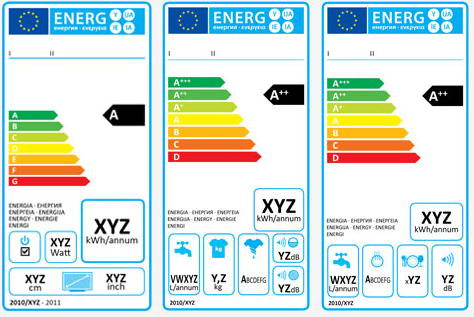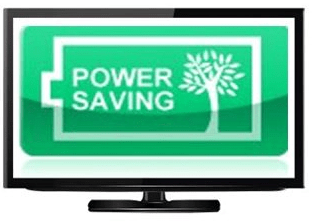As energy prices rise, most households are looking for ways to curtail their energy consumption. There are several appliances which add to a household’s energy consumption, but a TV set is one appliance which is present in almost every house. However, when it comes to determining the electricity consumption of your TV set, you need to look at a lot of factors. Television technology has improved a lot over the years and there are a wide variety of TVs available in the market, which makes it difficult to determine the exact wattage your TV consumes when its running. Don’t worry, in this guide, we will provide complete information which you may require to decide how much electricity does a TV use.
How Much Electricity (Watts) Does a TV Use?
Modern day televisions don’t use much electricity and they don’t contribute too much in your home electricity bill. In the chart below you can see the all types of TV screens and their average electricity consumption is watts for various screen sizes.
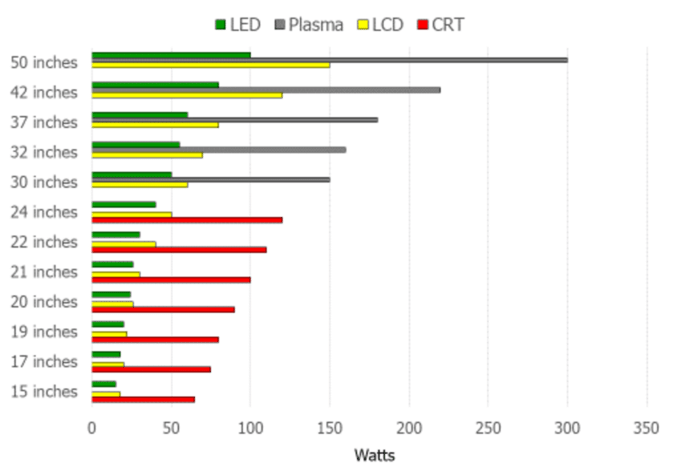
As you can see, that the CRT and Plasma screen TVs consume more than 3 times the electricity of an LCD or an LED screen TV. Also, the most energy efficient TV set is the LED TV. You will notice that the energy efficiency of a TV increases with the screen size, which means that a 42-inch LCD TV will be more energy efficient than a 32-inch LCD TV, when they are compared to their same screen size Plasma TVs.
Factors That Determine and Affect the TV’s Energy Consumption
If you are worried about your energy bills, then you must know the factors which determine and affect the energy consumption of your TV set. Knowing these factors will surely help you in reducing your energy bills and make you act more responsibly when you are operating your television.
A) Factors That Determine TV Energy Consumption
The main factors that determine the energy consumption of your TV set are given below:
- Age: The old models of TVs were energy hungry as they used to consume up to 400 watts or more. This is way more energy consumption than the present day TVs, but as a thumb rule, you can say that the newer a television set is, the lesser energy it will consume.
- Screen Size: This is an important factor as larger sized screens consume higher energy. Some LED TVs which have 15-inch screen size consume electricity as low as 15 watts. Screen size of a TV is measured diagonally.
- Screen Resolution: TVs with higher resolution consume more electricity. Although a higher resolution means a clearer display, but this comes at a higher energy cost. Therefore, a 32-inch QHD LED TV will consume more electricity, than a 32-inch FHD LED TV.

- Type of Screen: The Plasma screens consume almost same electricity as a CRT screen, which is 3 times or more, than the LCD / LED screens. Both LCD and LED TVs consume nearly same amount of electricity for small screens TVs, but the LED TVs become more energy efficient as the screen size increases.
B) Factors That Affect TV Energy Consumption
As said above, the screen size of your television is an important factor, which can determine its energy consumption. However, there are some other factors which can influence the overall energy consumption of your TV set.
- Display Settings: The brightness, contrast and color settings of your TV directly influences its energy consumption. The more brightness, color and contrast levels you are using, the more will be the energy consumption of your TV.
- Connected Devices: If more devices are connected with your TV, then your TV will consume more electricity. Such devices include, video players, gaming consoles, etc.
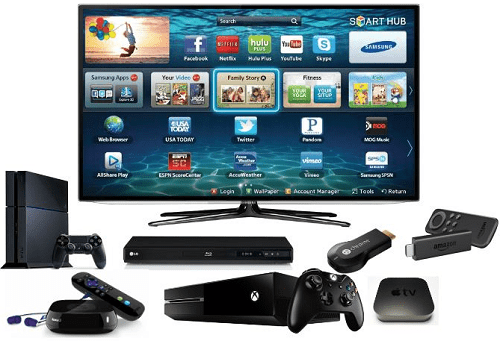
- Mode of Use: There are certain operating modes when TV consumes less electricity, like the sleep mode or the standby mode. However, if your TV power plug is plugged into the power socket and the switch is turned on, then even if your TV is switched off, it will consume electricity. Although the consumption of the electricity will be very low, around 0.5 watt per hour.
Now that you know which factors determine and influence the energy consumption of a TV, its time to calculate the per hour electricity consumption of your TV.
How Much Electricity Does TV Consumes Per Hour?
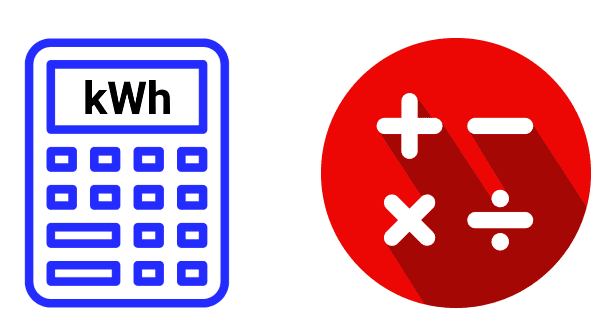
Now you know how much electricity a TV consumes, but to know the exact wattage number of your television set, you should look on the backside of your TV. In the back label of your TV, you will find a wattage number ending with the letter ‘W’. This number is the maximum amount of wattage your TV will consume based upon factors discussed in the above section.
To calculate how much electricity your TV consumes in one hour and how much it costs you in your region, you will have to perform some simple steps of multiplications and divisions. Let’s say, you have a 50-inch LED TV which consumes up to 100 watts of electricity and you watch your TV every day for nearly 5 hours. Using these two data points we will calculate rest of the numbers.
- Multiply Watts with Hours used.
100 W x 5 hours = 500 Wh. - Divide Watthours with 1000 to get kWh.
500 Wh / 1000 = 0.5 kWh. - You are billed for 1 kWh. So, multiple the cost of 1 kWh or 1 Unit of electricity in your region to get the energy cost of your TV usage for one day. Let’s take energy cost as $0.10 for 1 kWh.
0.5 kWh x $0.10 = $0.05 per day.
That’s it, you can use the same formula to calculate the energy costs of running your TV by replacing its wattage and hours used as per your requirements. Finally, you can multiply the per day energy costs with 365 to get the average yearly cost of running your television set.
How to Determine Your TV’s Power Consumption?
Like said before, the wattage written in the back label of your TV tells you the maximum power consumed by your TV. If you want to find the power wattage that your TV is consuming, then there are some ways, which we will discuss below.
- Using Wattmeter: A wattmeter is a special tool which has been designed to find the exact wattage an appliance consumes. You can attach the wattmeter with your TV and get the exact reading of the watts consumed by your TV.
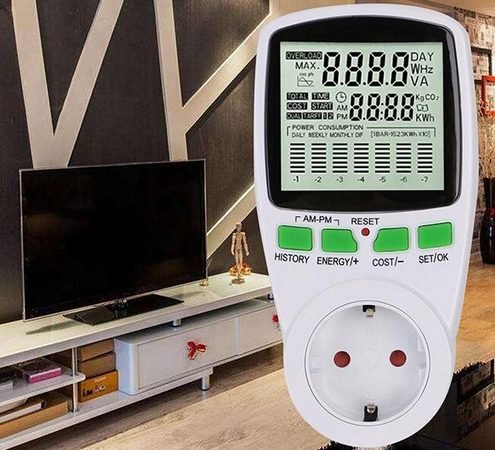
- Calculate with Formula: We have shared above data of how much electricity a TV consumes based on various factors. You can calculate the approximate value of electricity that your TV may consume when its running on a particular setting.
- Using Electric Meter: This is the most complicated way, but it works. Turn off all the electrical appliances in your home and note down the reading on your electric meter. Use a stopwatch and wait for the meter reading to change. Subtract the second reading from the first and use the stopwatch time to determine how much wattage your TV has used during that time.
You can use the above methods to determine the energy consumption of your TV. Also, you can visit the official website of your TV manufacturer and enter your TV model number to get complete details of your TV.
What is Energy Efficiency Class for TV?
Televisions are one of the most commonly used household appliances. Almost everyone uses their TV for multiple hours in a normal daily routine. This could amount to thousands of hours per year. Therefore, when buying your TV, its better to buy an energy efficient TV, so that you can save money in your electricity bills in the long run.
Therefore, now a days, many TV manufacturers are providing energy efficiency ratings for their TV. These ratings provide a lot of details about that TV set and not just its watts it consumes with respect to its screen size. A TV with better energy efficiency rating allows you to connect more external media with your TV. Since, each new media that you attach with your TV set, increases the power consumption of your TV, the TV with better energy efficiency can be attached to more external devices, like tuners, flash drives, players, etc.
These energy efficiency class ratings have been in place since 2010 and a television is rated from Grade A to Grade G. Grade A is further divided into three categories of A+, A++ and A +++.
Tips to Save Electricity While Watching TV
You can take some measures to reduce the electricity consumption while you are watching your television. The tips given below are simple, but highly effective and they will surely help you reduce your electricity bill, especially if you are regular TV user.
- Location of TV: Install your TV at a well-lit place so that you can clearly watch your TV at low brightness and contrast levels. Watching TV at high levels of brightness will increase the wattage consumption of your TV.
- Unplug Idle Devices: All the devices which are not in use, but are connected with your TV must be unplugged. When your TV is connected to an external device, then it consumes more power. Therefore, if a device is idle, then you better unplug it from your TV.
- Unplug from Socket: When you are not watching your television, then you should unplug its power plug from the power socket. You should do this when your TV is in sleep mode or standby mode.
- Activate Eco Mode: Check if your TV has an Eco Mode setting or not. If your TV has such a feature, then always watch your TV in Eco Mode as it will help you in reducing its energy consumption. Eco Mode, is just a popularly known feature, maybe your TV has some other energy saving mode, then search for it an activate it on your TV.
- Shutdown Timer: If you have a habit of falling asleep while watching TV, then use the shutdown timer function so that your television gets automatically shut off after a set period. This way you will avoid unnecessary use of your TV.
- Utilize Presence Sensor: Some TV sets have a presence sensor, which automatically shuts off your TV when you are no longer sitting around it. If your TV has presence sensor technology, then turn on this feature to reduce the power consumption of your TV set.
Apart from the above suggestions, you can follow some tips if you are buying a new television. Buy a TV with good energy efficiency rating and avoid buying plasma TVs as they are more power hungry, than the LCD and the LED TVs.
My Final Views
Now you know how much electricity does a TV use. Although the average wattage consumption of a television is very low, but its usage is high. Overall energy efficiency of the TV sets has improved over the years, but since the energy costs are rising, its always helpful to save some additional money. Hopefully, the information shared in this guide, will help you in reducing your energy bills.

